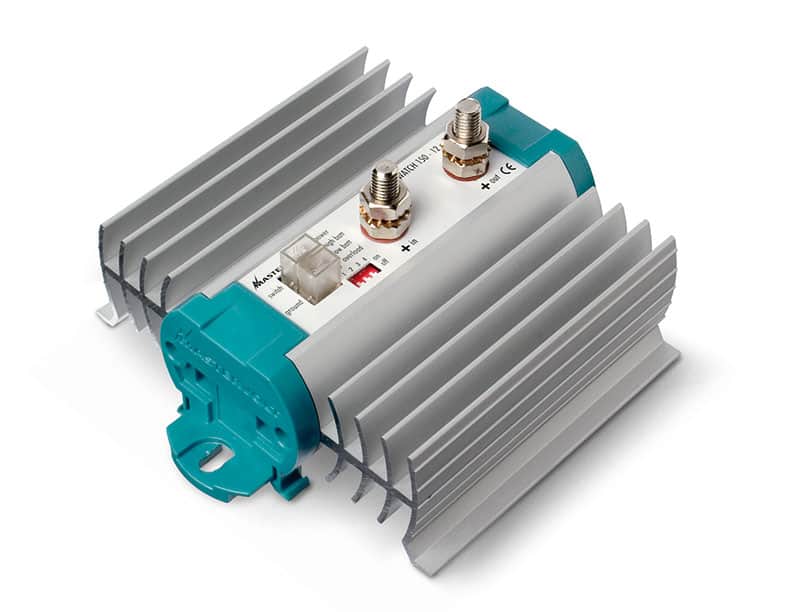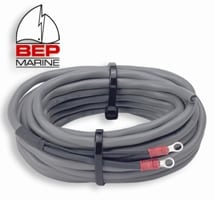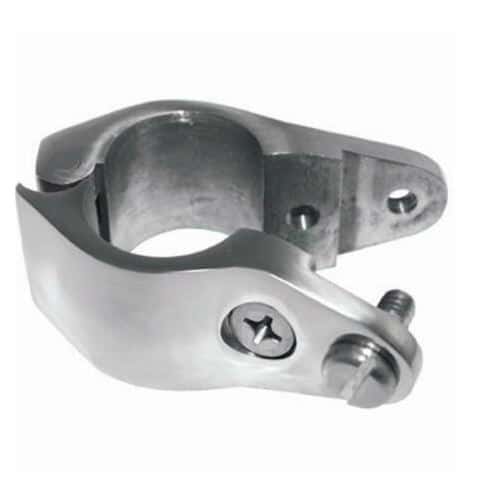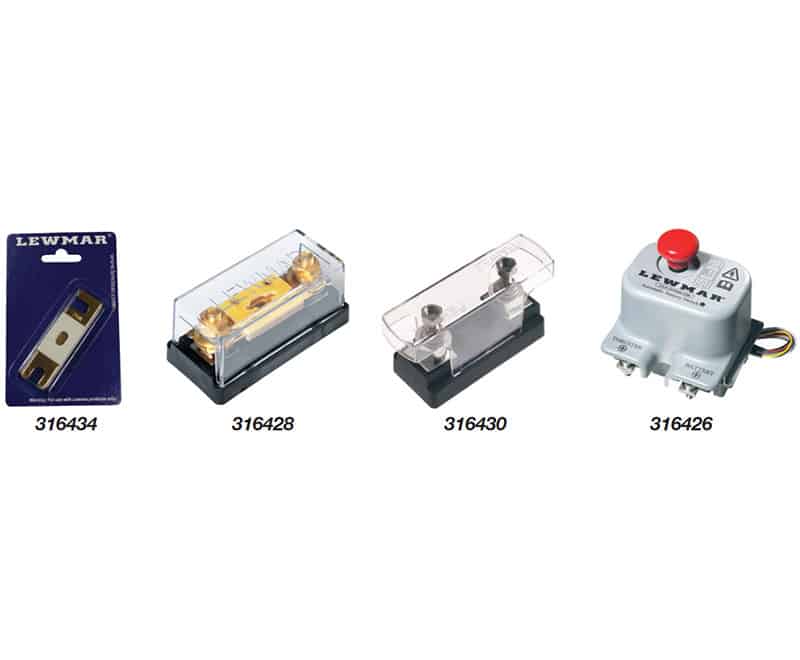Owning a boat is a dream come true for many. Whether you’re into fishing, leisurely cruises, or water sports, maintaining your boat is as important as enjoying it. Regular upkeep not only extends the life of your vessel but also ensures your safety on the water. In this comprehensive guide, we’ll walk you through essential steps for maintaining your boat. Before diving into tasks like checking air filters or replacing spark plugs, make sure you gather all the necessary supplies. For a detailed list of what you’ll need, visit our boat maintenance supply page.
Essential Components for Regular Boat Maintenance
There are several essential parts of a boat that require regular maintenance to keep it in top shape. These include:
Maintaining Your Boat’s Air Filters
Why Air Filters Matter
Air Filters play an important role in keeping your boat’s engine running efficiently. They prevent dust, debris, and other particles from entering the engine, ensuring clean airflow.
When to Replace Air Filters
Check your air filter every three to six months. If it appears dirty or clogged, it’s time for a replacement. A clean air filter can improve engine performance and fuel efficiency.
How to Replace Air Filters
Replacing an air filter is straightforward. Remove the old filter, clean the housing, and insert a new one. Make sure it’s properly seated to prevent unfiltered air from entering the engine. To ensure the perfect fit, you can buy air filters specific to your boat’s make and model from Boathut.
How to Care for Your Boat’s Anodes
The Importance of Anodes
Sacrificial aluminium anodes for boats are specially engineered to safeguard submerged and exposed metal components from corrosion, selecting the appropriate anode material is very important for optimising corrosion protection, and it varies based on local water conditions.
In saltwater, zinc or aluminium anodes are generally recommended as they are engineered to withstand the harsher corrosive elements found in marine environments.
By choosing anodes that match local conditions, boat owners can ensure maximum lifespan for their vessels’ metal components, ultimately reducing maintenance costs and enhancing safety on the water.
Boat Hut offers a diverse selection of high-quality Martyr anodes, including zinc and round models tailored for propeller shafts and rudders, block models for hull protection, complete kits for stern drives and outboards, as well as pencil models for diesel applications and heat exchangers.
Identifying Worn Anodes
Foul-smelling or discoloured hot water often indicates an issue with your anode rod. Once it has completely corroded, it can no longer protect your water heater’s lining, potentially leading to further damage.
Replacing Anodes
Removing the anode is simple. First, loosen the nuts to make it easier. The spring-loaded washers usually come off with the nuts, but it’s best to replace them before installing the new anode. The existing anode has protective matting behind it to safeguard the hull from corrosion, leaving a smooth surface after removal. Place the anode, attach a new set of spring-loaded washers, and tighten the nuts.
Battery Maintenance Tips for Boats
Battery Maintenance
Boat Batteries provide power to your boat’s electrical system, so maintaining them is paramount. Cleaning terminals and checking for corrosion is a common practice when it comes to maintaining your battery.
Choosing Your Battery
Always use a quality battery that meets your needs. If you have a small boat, a single battery will suffice. However, larger boats may require multiple batteries to power various systems onboard. When choosing a battery, consider the type and size of your boat and how much power you need for your electrical components. You can find Batteries for all of the boat types from Boathut.
Replacing a Battery
If your battery struggles to hold a charge, it’s time for a replacement. Disconnect the old battery, clean the terminals, and install the new one.
The Importance of Functional Bulbs and Lighting
Importance of Functional Bulbs
A boat is incomplete without proper lighting. Whether it’s interior or exterior lighting, always ensure that your bulbs are in working condition before heading out onto the water.
Types of Bulbs
Boathut offers a wide selection of bulbs in different types and sizes, including LED and halogen options. Whether you’re looking for energy-efficient lighting or traditional choices, you’ll find the perfect bulb to meet your needs. LED bulbs are energy-efficient, providing bright light while consuming minimal power. This makes them ideal for extending the battery life on your boat, especially during long voyages.
On the other hand, halogen bulbs are known for their high luminosity and excellent colour rendering, making them a popular choice for marine lighting. While they consume more energy than LEDs, they produce a warm light that enhances visibility and enhances the aesthetic appeal of your boat’s interior and exterior.
Replacing Bulbs
Replace bulbs by unscrewing the old one and inserting a new one. Ensure it’s the correct type and wattage for your boat.
Proper Care for Bungs to Prevent Leaks
What Are Bungs?
Bung is a small plug that fits into a hole at the bottom of your boat. It is primarily designed to prevent water from entering while you’re on the water.
Checking Bungs
Inspect bungs regularly for cracks or wear. Ensure they fit securely in the drainage holes to prevent leaks.
Replacing Bungs
Bungs come in various sizes, so knowing your boat’s specific hole size is essential for selecting the right fit. Remove the old bung and insert a new one for a watertight seal. Boathut offers a variety of Bungs to meet your boat’s needs.
Ensuring Smooth Operation with Cable Maintenance
Importance of Cable Maintenance
Cables control various boat functions, including steering and throttle. Checking your cables ensures they operate smoothly.
Inspecting Cables
Check cables for fraying, kinks, or stiffness. Lubricate them regularly to maintain smooth operation.
Replacing Cables
If a cable shows signs of wear, replace it immediately. Disconnect the old cable and connect a new one, ensuring it’s properly routed and secured.
Importance of Maintaining Clamps for Security
Role of Clamps
Clamps secure hoses and cables, preventing leaks and ensuring everything stays in place.
Checking Clamps
Inspect clamps for rust or looseness. Tighten any loose clamps and replace rusty ones.
Replacing Clamps
Unscrew old clamps and replace them with new stainless-steel clamps to prevent rust and ensure a secure fit.
Why Regular Cleaning is Crucial for Boat Longevity
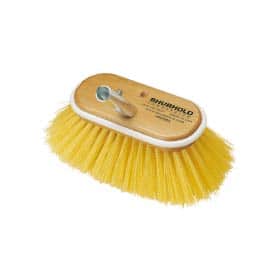
The need for eco-friendly cleaning solutions has gained significant attention in recent years, particularly due to their role in protecting marine life. Conventional cleaning products often contain harsh chemicals that can wash into waterways, leading to toxic conditions for aquatic organisms.
In contrast, eco-friendly alternatives are formulated with biodegradable ingredients that minimise environmental impact, ensuring safer habitats for marine creatures. Products such as vinegar, baking soda, and plant-based detergents are increasingly popular, as they effectively clean while being harmless to our oceans.
Brands like Star brite and Shurhold provide environmentally friendly cleaning products that focus on sustainability while maintaining effectiveness, making them ideal for eco-conscious consumers. You can find all the eco-friendly boat cleaning products from Star brite and Shurhold at BoatHut.
Regular Cleaning
Regular cleaning keeps your boat looking great and prevents long-term damage from salt and grime.
Cleaning Supplies
Use marine-specific Cleaning supplies to protect your boat’s surfaces. Freshwater rinses after every trip to remove the salt.
Deep Cleaning
Perform a deep clean every few months. Scrub the deck and polish metal parts to maintain your boat’s appearance and functionality. Remember, everything you need to clean your boat can be found on BoatHut.
Routine Engine Maintenance for Optimal Performance
Engine Maintenance
The engine is like the heart of your boat. Keeping the engine in good condition will ensure your boat runs smoothly and reliably. Boathut has a dedicated blog post titled “The Boat Owner’s Manual: Tips to Maintain Performance and Durability” for engine maintenance.
Fuel Filters & Fittings: Ensuring Clean Fuel Flow

Importance of Fuel Filters
Fuel Filters & Fittings prevent contaminants from reaching your engine, ensuring smooth operation.
Checking Fuel Filters
Inspect fuel filters when you are going to change oil. Replace them if they appear dirty or clogged to maintain fuel flow.
Replacing Fuel Filters
To replace a fuel filter, shut off the fuel supply, remove the old filter, and install a new one. If the filter includes a water separator, make sure to empty it. Ensure the fittings are secure to prevent leaks..
Fuses
Role of Fuses
Fuses protect your boat’s electrical system from overloads and short circuits.
Checking Fuses
Replace any blown fuses to ensure electrical components function properly.
Replacing Fuses
Replace fuses by removing the old one and inserting a new one of the same rating. Ensure it’s properly seated to restore electrical function.
Maintaining Hoses and Hose Fittings
Importance of Hoses
Hoses transport fluids throughout your boat. Regular checks prevent leaks and ensure proper fluid flow.
Inspecting Hoses
Check hoses for cracks, leaks, or stiffness. Replace any damaged hoses to prevent leaks.
Replacing Hoses
Disconnect the old hose and connect a new one, ensuring it’s properly routed and secured with clamps.
Hose Fittings
Role of Hose Fittings
Hoses Fittings connect hoses to various components. They must be secure to prevent leaks.
Inspecting Hose Fittings
Check fittings for leaks or corrosion. Tighten or replace any that show signs of wear.
Replacing Hose Fittings
To replace a fitting, disconnect the hose, unscrew the old fitting, and install a new one, ensuring a tight connection.
Replacing Impellers to Prevent Overheating
What Are Impellers?
Impellers pump water through your engine’s cooling system, preventing overheating.
Checking Impellers
Inspect impellers annually. Replace them if they show signs of wear or damage.
Replacing Impellers
Remove the old impeller and install a new one, ensuring it’s properly aligned and lubricated for smooth operation.
Regular Oil Changes and Oil Filter Maintenance
Importance of Regular Oil Changes
Regular Oil changes keep your engine running smoothly and prevent wear.
Checking Oil Levels
Check oil levels before each trip. Top off if necessary to maintain proper lubrication.
Changing Oil
Change oil every 100 hours of operation. Use marine-specific oil for optimal performance.
Oil Filters
Role of Oil Filters
Oil Filters remove contaminants from your engine oil, keeping it clean.
Inspecting Oil Filters
Inspect oil filters during each oil change. Replace them with each oil change to maintain oil cleanliness.
Replacing Oil Filters
Remove the old filter, clean the housing, and install a new filter. Ensure it’s properly seated to prevent leaks.
Using Sealant and Silicone Grease for a Watertight Boat
What Is Sealant?
Sealant prevents leaks in various boat components, ensuring a watertight seal.
Applying Sealant
Apply sealant to joints, fittings, and other areas prone to leaks. Use marine-specific sealant for durability.
Replacing Sealant
Remove old sealant and apply a new layer to maintain a watertight seal.
Silicone Grease
Importance of Silicone Grease
Silicone Grease lubricates moving parts, preventing wear and corrosion.It can also be used on scuba gear.
Applying Silicone Grease
Apply silicone grease to hinges, latches, and other moving parts. Reapply regularly to maintain lubrication.
Replacing Silicone Grease
Clean old grease and apply fresh silicone grease to ensure smooth operation.
Inspecting and Replacing Spark Plugs
Role of Spark Plugs
Spark Plugs ignite the fuel-air mixture in your engine, providing power.
Checking Spark Plugs
Inspect spark plugs annually. Replace them if they show signs of wear or fouling.
Replacing Spark Plugs
Remove old spark plugs and install new ones, ensuring they’re properly gapped and torqued.
Water Pump Kits: Essential for Engine Cooling and Performance
What Are Strainers?
Strainers filter debris from your boat’s water intake, preventing clogs.
Checking Strainers
Inspect strainers when you can. Clean them if they appear dirty to maintain water flow.
Replacing Strainers
Remove the old filter and install a new one, ensuring it’s properly seated to prevent leaks.
Water Pump Kits
Importance of Water Pumps
Water Pumps circulate water through your engine, cooling it to prevent overheating. The main component, the impeller, should be replaced every 100 hours to ensure optimal performance. The water pump is one of the most important parts of the engine cooling system, and proper maintenance is essential for the longevity of your engine.
Inspecting Water Pumps
Check the impeller of your water pumps every 100 hours. Replace them if they show signs of wear or damage.If not replaced you can be at a risk of being stranded offshore
Replacing Water Pumps
Although you can Remove the old pump and install a new one, it is best to let a professional handle this task.
Conclusion: Routine Maintenance Ensures Safe Boating
Maintaining your boat doesn’t have to be overwhelming. By following these steps, you can keep your vessel in top condition, ensuring safe and enjoyable adventures on the water. Regular checks and replacements of essential components will extend the life of your boat and enhance your boating experience. Remember, a well-maintained boat is a happy boat.




